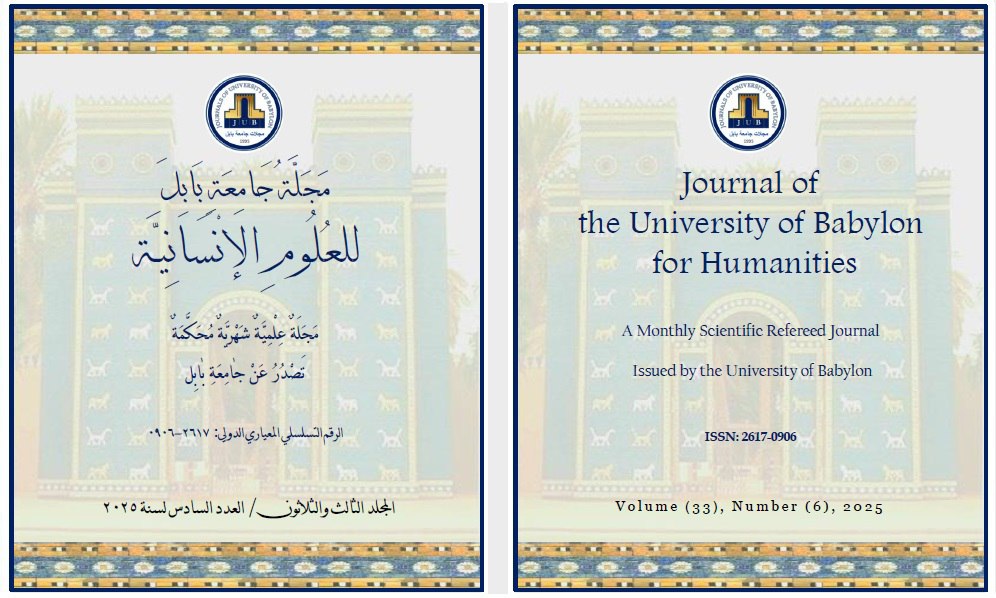The Influence of Time and Place in Shaping Artistic Imagery: The Divan Lastum Wahdakum (You Are Not Alone) as a Case Study
Main Article Content
Abstract
The relationship between poetry, time, and space constitutes a pivotal axis in modern critical studies, transcending mere mutual influence to an organic fusion between the poet’s inner self and their external world. The poetic image emerges as a central manifestation of this relationship, evolving into a semantic fabric that merges sensory and abstract dimensions, rooted in the dynamic interplay of time and space. The image does not detach from its spatiotemporal context during its formation; rather, it draws vitality from the symbolic dynamism born of the fusion between spatial allusions and the flow and shifts of time. This interaction generates multiple interpretations of a single text, varying according to the temporal and spatial contexts of its reading, thereby establishing hermeneutic shifts that reflect the richness of poetic discourse and its capacity to transcend historical moments. Within this framework, the anthology )You Are Not Alone(—co-authored by contemporary Yemeni poets—serves as an applied model of this intricate relationship, particularly in its engagement with the pivotal event of the "Battle of Al-Aqsa Flood" (October 2023). Through textual analysis, it becomes evident how the poets transformed this historical event into multilayered poetic material, shifting from narrating military and political details to philosophical meditations on the symbolism of time (as a marker of impermanence and hope) and space (as a vessel of memory and resistance). This artistic endeavor materialized through diverse techniques, such as linking historical places (Hattin) with contemporary ones (Gaza), and employing interrogatives as tools to express existential crises. These techniques transformed the anthology into a symbolic space that reconfigures collective identity in the face of challenges. Thus, the role of time and space in poetry is not confined to narrative framing; they become integral to the very structure of poetic discourse. Through an ongoing dialogue between the self and the cosmos, the poetic image reshapes the world.
Article Details
Issue
Section

This work is licensed under a Creative Commons Attribution 4.0 International License.

